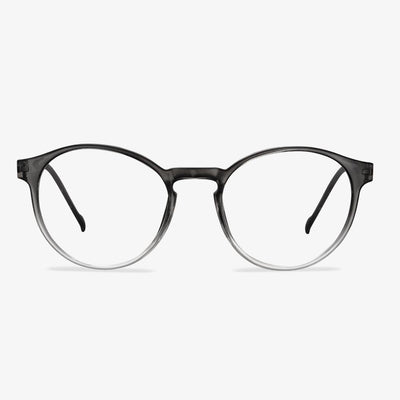How long do plastic frames last?
Plastic frames are made of non-biodegradable materials and are possible to last forever. If the frame is made of acetate, the layers of acetate fibers make the frame vary in degrees of transparency and pattern. The plastic frame manufacturing process makes the plastic frame more brittle than the acetate frame. In this sense, the acetate frame has a longer service life. Then the plastic, which is made of SAP, will never break down. Depending on the circumstances, it could take years. If the lenses are polycarbonate, the material takes hundreds of years to break down naturally. If TR-90 is normally stored, not exposed to the sun, and put in the box with cloth wrapped, and then you can keep 3 years, there is no effect.
Is it a good idea to buy glasses online?
If the product is purchased from a reputable and trusted retailer, buying glasses online is just as safe as buying any other product online. Buying custom-made products, such as 'prescription glasses' online, is a bit more complicated than buying regular 'ready-made' glasses. All uploaded prescription glasses orders are reviewed and notified when serious errors are found in the prescription. All prescription glasses to be shipped are also carefully checked by quality control personnel to ensure that the glasses match the required prescription to the highest standard.
How To Choose Better Night Driving Glasses?
Driving at night has a high accident rate because of poor visibility, blinding headlights, and fatigue. Now the market exists a few main glasses: sunglasses polarizing lenses, Glasses that use or mimic the first generation of patented technology. So how do you compare the options between driving and wearing glasses?
Night driving lens is relatively special compared with daily driving lens, not only to prevent strong light and see the road more clearly. According to the national motor vehicle driver special glasses standards, QBT 2659-2004 daily light transmittance should be more than 8%, night light transmittance should be more than 75%. Be sure to consult customer service. Ask about the situation. Note that a pair of polarized sunglasses are not suitable for use at night, and the light transmittance must reach the national safety standards.
Why do people like wearing rimless glasses?
'Seamless connection, minimalist design' is the feature of the rimless glasses. Anytime, it is an invincible weapon integrating 'elegance, fashion, high-end, character', attracting countless attention. So in the European and American markets, it occupies 40%, most of which are the trendsetters who pursue fashion. In addition, rimless glasses will not cover too much of the face, which will show more reality to the wearer's style and temperament. The integration with the overall appearance is more perfect, and the wearer can be more flexible and casual in matching clothes. In addition, rimless glasses are more stylish and colorful.
Evolution of hard coating technology
The first generation of the use of hard coating technology began in the early 1970s, the quartz material is deposited on the surface of a resin lens under vacuum conditions, form a very hard anti-wear film. However, due to the mismatch between the thermal expansion coefficient and the film base material, it is easy to delaminate and crack the film. Instead, it forms the mottle on the surface of the lens, and the effect is not optimal.
The second generation of hard coating technology is the use of the 1980s. The surface of the resin sheet is coated with a material with high hardness and not easy to be brittle and cracked by an immersion process. At this time, anti-reflection coating lenses had appeared and gained the recognition of consumers, but the mismatch between adding hard coating and anti-reflection coating still caused serious lens wear.
The third generation of hard coating technology was developed in the 1990s, mainly in order to solve the problem of wear resistance after coating resin lenses with an anti-reflection film. The hardened material evolved into a polymer organic matrix material.
Fourth-generation coating technology is dominated by silicon atoms, in which the hardened solution contains both organic substrates. It contains inorganic ultrafine particles, including silicon elements, which make the hard coating not only tough but also hard.
Disadvantages of polarized sunglasses
Polarized sunglasses have many benefits. However, in some cases, non-polarized lenses are a safer choice. On cloudy days, drivers find that non-polarized sunglasses are better than polarized sunglasses due to the lack of glare and extreme sunlight.
Driving with polarized lenses after snowing can be dangerous for drivers. As the glare of polarized sunglasses is blocked, ice or snow on the road will not be visible. In this case, the advantages of polarized sunglasses will become the disadvantages that may cause accidents.
In addition, when driving along a dark road with few street lights at night, wearing polarized lenses will make it harder to see the road conditions because they dim the available light better than non-polarized glasses. Of course, in low-light conditions, it is best to avoid wearing sunglasses completely while driving.
The most significant disadvantage of polarized sunglasses is that they do not perform well on digital screens and displays. They can cause the images and information on the LCD screen to blur or disappear at certain angles. Don’t wear polarized sunglasses to use these devices while driving.
How are we nearsighted?
The light from external objects to the eye needs to be refracted by the lens before it can be imaged on the retina. The refractive power of the lens depends on the contraction and relaxation of the ciliary muscle. When we look at close objects, the ciliary muscles contract and the lens becomes thicker. When we look at distant objects, the ciliary muscles relax and the lens becomes thinner. Adjust the focal length of near and far objects so that they will show a clear image on the retina. If you use your eyes too often and the longer the ciliary muscles work continuously, the ciliary muscles will spasm because of too much tension. At this time, the lens cannot be adjusted and thinned. After the light from a distant object is refracted by the lens, the imaging position will fall in front of the retina instead of on the retina. Only a blurred image can be seen, which becomes myopia.
There is another situation. For some people, due to genetic factors, in the process of growth and development, the front and rear wheelbase of the eyeball will gradually become longer. In this way, although the adjustment function of the ciliary muscle and the lens is normal, the image formed will also fall in front of the retina due to the longer the axis distance of the eyeball, which can also cause myopia.
The two causes of myopia are different. Myopia caused by ciliary muscle spasm is called 'pseudo-myopia'. As long as the ciliary muscles are relaxed, myopia can be reversed. Myopia caused by the extension of the wheelbase of the front and back of the eyeball is called 'true myopia', which cannot be reversed and can only be corrected by myopia glasses.











































